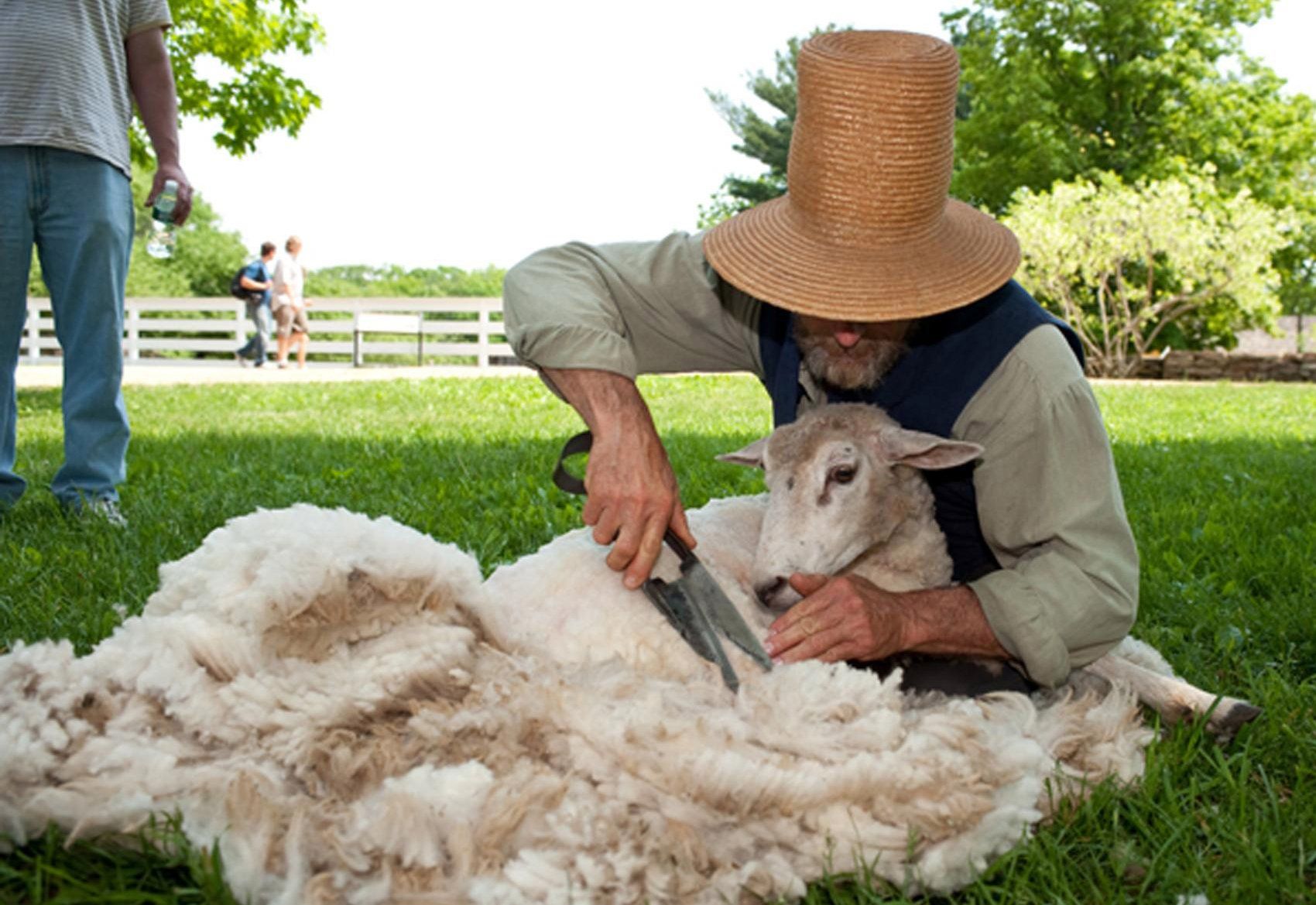Sheep, Stonewalls & Wheel Heads
(Below is a Video Explanation from Old Sturbridge Village of a Spinning Wheel)
From the colonial period into the 19th Century, cloth furnishings and clothing accounted for a substantial portion of a family’s wealth. It is estimated that a household would require 65-yards of linen or cotton for household goods, and 30-40 yards of wool for clothing.
Woolen cloth started in the late spring with sheep being washed in ponds or streams and sheared. Usually, the fleece bundles were stored in the attic or lofts of homes until winter.
Once the bundles were opened, the fleece was picked clean of the debris acquired in an open pasture and sorted by grade. It was then carded to straighten out the fibers, resulting in tube like structures called rolags.
From the rolags, the fibers would be spun into yarn. After dyeing, the yarn was woven on a loom into cloth. The cloth would be finished off by undergoing a process called “fulling”, cleaned of the oils, dirt, etc., and pounded to make soft and thick. (By 1794, Chesterfield already had several fulling mills and in about 1800 a carding mill.)
In the early 1800s, Spanish Merino sheep were introduced to New England. This breed produced ten pounds of very soft high-quality fleece as opposed to the three produced by the local breeds. By 1810, New England was the world’s epicenter of wool production. Eventually, the landscape was literally cleared and 250,000 miles of stonewalls built to contain the booming sheep population. By 1840, there were two sheep to every person in New Hampshire.
During this period, yarn was spun on the great spinning wheel, a.k.a. walking wheel. In 1810, Amos Miner patented a spinning wheel head with a pulley system. This “accelerated spinning wheel head” increased the spindle to great wheel rotation ratio to 230 to 1. This improved a spinner’s productivity to 3,000 - 4,000 yards a day. Such an increase made the cottage industry of spinning important well into the late 19th Century. Thus, elevating spinning into a major household money making activity.
Once the patent expired in 1820, the entrepreneurship of Chesterfield’s factory owners came into play. Factory Village (Spofford) already had several woodworking shops. By adding to the production the accelerated spinning wheel head, business boomed! Benjamin Pierce dedicated one of his Factory Village shops exclusively to these spinning heads, employing at one point 75 workers. It is estimated that around a million Miner's “heads” were produced in Chesterfield. Some are still in use today!
In the 5-minute video below, Old Sturbridge Village in Sturbridge, MA Collections Manager and Curator of Textiles, Rebecca Beall, explains how the walking wheel with the Miners Accelerated Head functions. (Unfortunately you may have to go through a commercial first.)






